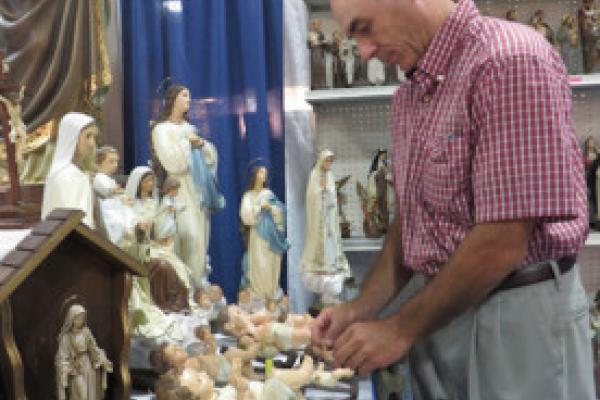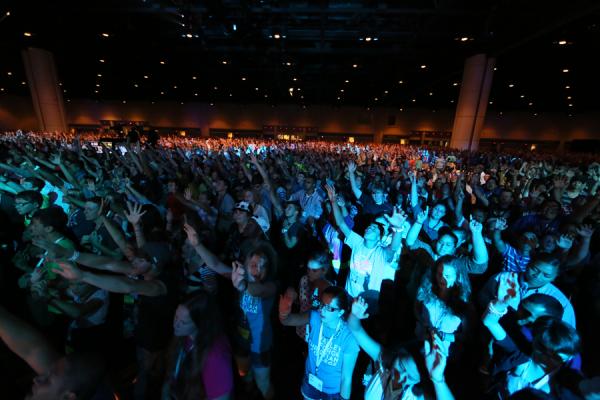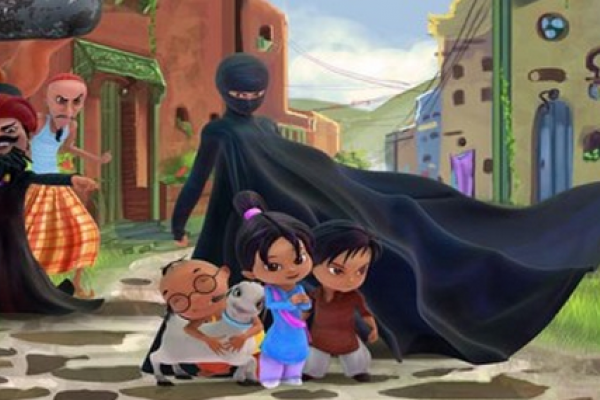Centuries ago, Roman Catholics helped kick-start the market for religious articles with their insatiable demand for rosaries, icons, prayer cards, and all manner of devotional objects and spiritual souvenirs.
But in recent decades, evangelical Protestants have dominated the art of religious retailing, building a national network of bookstores and stamping the Christian message on almost any item that an American consumer might want, from perfume to golf balls to flip-flops.
Now, Catholic entrepreneurs are looking to catch up, and at the 17th annual Catholic Marketing Network trade show last week (Aug. 6-9) there was a sense that the Catholic sector has a new opportunity to expand — if businesses can update their approach and broaden their inventory beyond the usual catalog of sacred objects.
“If you are a Catholic gift and bookstore and you are not willing to reinvent yourself, you are going to be out of business,” said Alan Napleton, president of the network, which organizes the convention.
The Assemblies of God, a denomination rooted in rural and small town America, appears to have leaped into the 21st century with dramatic results.
At its General Council meeting last week, the denomination touted its formula for defying the seemingly irreversible decline of other religious groups: contemporary music, arts and high-tech quality communication, outreach to young people, immigrants and ethnic minorities.
The denomination reported a 1.8 percent increase in U.S. membership to 3 million adherents. Globally, the gain was 1.5 percent, to 66 million, making it the largest Pentecostal group in the world.
Why are the Assemblies of God defying the odds?
Pakistan’s new animated television series, “Burka Avenger,” features a female Muslim teacher disguised in a tight black outfit with a cape and ninja-style head cover who throws heavy books and sharp pens at men who oppose education for girls.
The fictional show coincides with the real life of Malala Yousafzai, the teenage Pakistani student who was shot in the head in an unsuccessful bid to kill her because she spoke out in support of girls’ education.
The Burka Avenger has been mostly victorious against her Taliban-like enemies during the first two shows, which began on July 28.
If, through broader networks of power, injustice is linked, it is no less true that injustice is encountered locally in neighborhood markets, schools, churches, and even corner fast-food joints. Today it is useful to begin not with the unseen oppressive power networks in our society but with their effects on those closest to us. Just ask the single parent serving dollar ice cream at a favorite fast-food hangout if he or she would like better hourly wages.
While fast food CEOs average a daily salary of $25,000, workers at fast-food companies in New York City make only 25 percent of the money they need to survive. Single parents earning the current federal minimum wage of $7.25 an hour are, as Jillian Berman of the Huffington Post describes, not able to survive even in America’s cheapest counties. The Wider Opportunities for Women estimates that women are 50 percent more likely than men to earn the minimum wage. Compound this with the status of single motherhood and the needs of the household intensify exponentially.
Dependent on minimum wages are children, who like any other child in the U.S., deserve access to healthy food, clothing, affordable shelter, and descent education. Within the current reconfigurations taking place in the U.S. economy, the new modes of production continue to privilege those like the CEOs of fast-food companies. Yet, as Isaiah’s ballad reminds us, these wider realities have a local impact on the everyday friend, who routinely rises every morning to try and make ends meet on meager wages. The current vineyard of the fast-food industry has not stopped producing sour grapes, which is the massive sale of cheap empty calories at the wage of $7.25 an hour.
An effort to tweak President Obama’s health care reform bill to fill a gap for church health insurance plans could fail because of Republicans’ insistence on repealing the law.
Without a fix, United Methodist Church leaders say some of their churches could drop current coverage for employees once “Obamacare” takes full effect next year, according to Colette Nies, spokeswoman for the UMC’s General Board of Pension and Health Benefits.
Under Obama’s 2010 Affordable Care Act, more than 50 percent of UMC clergy would qualify for tax credits available to lower- and middle-class families to purchase insurance. But because of the way the law was written, those tax credits cannot be used toward insurance plans churches can offer through government-run exchanges.
Several of my college buddies should work for Daniel Tosh. They have the uncanny ability to scour the Internet and find the most obscure and outlandish videos. Recently, one of my buddies posted a video called Bibleman. My eyes and ears could only withstand a few minutes before I determined my soul might wither away. I assume this was just one video in an entire series. Even more disheartening is the fact it was put out by a church.
Here is, yet again, a case where the church, in an attempt to imitate culture falls short. The result is that they wind up excelling in mediocrity. Granted, I'm sure that's not the goal of any church, but sadly mediocrity is what most seem to offer. My hope is that this comes across as an open dialogue in how we can better proclaim the message of Jesus instead of a bitter rant directed toward the church.
We all realize that a copy is never as good as the original. Unfortunately, we have a difficult time grasping this truth in the church. We have ceased innovating and settled for imitating.





